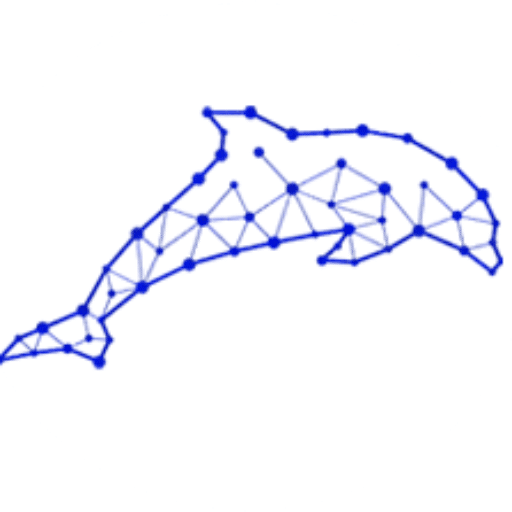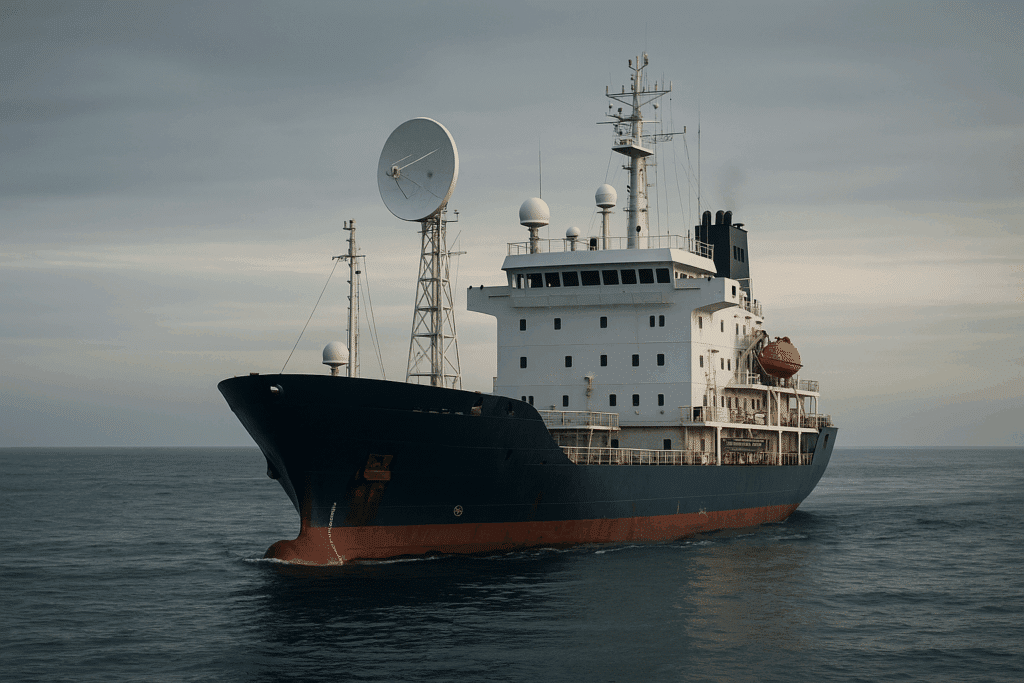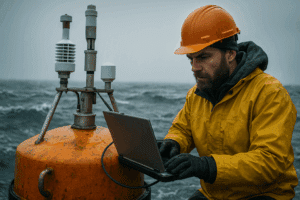Several technologies have been developed to monitor and understand the undersea environment. Among the cutting-edge innovations are maritime IoT technologies, devices, and communication protocols that enable real-time data collection, transmission, and analysis. Three leading IoT solutions include LoRa, NB-IoT, and Satellite Mesh, enabling maritime IoT devices to transmit data across different environments.
These communication protocols are the backbone for real-time monitoring, smart vessel operations, and environmental tracking in diverse marine settings. Each innovation offers unique strengths and limitations based on range, power consumption, bandwidth, and environmental conditions. This article compares these technologies’ performance and explores the challenges and future of IoT connectivity in marine ecosystems.
What Are Maritime IoT Connectivity Technologies?
The Internet of Things (IoT) are smart devices that connect with the internet or interact via wireless networks. The technology collects, shares, and responds to real-time data without human intervention.
LoRa, NB-IoT, and Mesh in Maritime IoT
As IoT transforms how the maritime industry connects and interacts with devices, various network options are emerging to enable the development of smart solutions. Three popular options stand out: LoRa, NB-IoT, and Mesh network technologies.
LoRa
LoRa, short for Long Range, is a wireless communication technology that connects many nodes or “things without needing 3G or WiFi. It is part of the LoRaWAN (LoRa Wide Area Network) standard, commonly used in IoT applications to link battery-operated devices to a server via gateways. Its design supports connected sensors across wide areas, making it suitable for smart monitoring in ports, vessels, and buoys.
NB-IoT
NB-IoT (Narrowband Internet of Things) is a standard low-bandwidth technology built specifically for IoT applications. Operating over cellular infrastructure, it provides secure, efficient data transfer between nodes and centralized servers. NB-IoT is best for low-frequency transmissions such as environmental sensors, smart meters, and asset-tracking devices. This technology helps operators figure out operational needs with minimal data and energy use.
Mesh Network
This network structure forms a web of connected nodes, where both satellites and ground-based devices communicate with each other and with servers. The technology allows data to be routed flexibly, ensuring security and resilience in challenging regions like oceans or isolated coasts. Mesh networks support IoT applications requiring broad coverage and uninterrupted communication. As maritime demands evolve, mesh solutions will play an important role in the global market.
Evolution of Maritime IoT and the Rise of Protocol Wars
When maritime communication was originally based on satellite links and analog systems, it advanced with the rise of specialized IoT protocols like LoRa, NB-IoT, and Mesh technologies. This enables efficient data transfer between each device or node, supporting everything from environmental sensors to cargo monitoring systems.
As marine operations become automated, applying the best protocol is more crucial than ever. Each application requires a tailored system that considers range, energy usage, data volume, and security. Choosing the right connectivity model unlocks the full potential of digital maritime ecosystems.
Use Cases in Maritime Operations
With over 80% of global trade transported by sea, efficient communication systems have become critical to enable operational excellence. From smart buoy systems to remote monitoring of oceanic infrastructure, each advancement plays a distinct role in enhancing marine applications within the IoT ecosystem.
LoRaWAN
LoRaWAN is suitable for port environments and smart buoy networks due to its long-range communication capabilities and minimal resource demands. In port management, this technology can monitor cargo movement, berth occupancy, and environmental conditions. Equipped with LoRa devices, buoys collect and transmit essential data on weather, tides, and water quality. Each node functions within localized zones, helping maritime services maintain safety and logistics. These connected nodes send data to a centralized server, reinforcing operational security and awareness in the harbor market.
NB-IoT
The NB-IoT standard ensures secure and stable connectivity for onboard systems requiring consistent data flow, such as engine diagnostics, fuel tracking, and predictive maintenance. This cellular technology performs well even in high-metal-density environments like ship interiors, where other signals often weaken. Maritime operators rely on NB-IoT applications to figure out issues early, improve vessel health, and minimize downtime. Connected devices regularly transmit structured data to servers, supporting the efficient management of fleet nodes.
Mesh Network
This network is essential in global marine operations where traditional options are insufficient. Known for its efficiency, the mesh technology supports connected nodes and continuous data exchange. It is widely used on shipping routes and remote offshore platforms for IoT applications like GPS tracking, equipment health monitoring, and emergency communication. With each node transmitting across the network, maritime systems will remain functional and secure regardless of geography, strengthening their role in the global market.
Technical and Operational Comparison
The global fleet encompasses over 100,000 commercial vessels, such as container ships, bulk carriers, and tankers. Today, ports globally handle more than 800 million TEUs (Twenty-foot Equivalent Units) annually, so smart technologies are becoming critical. What are the strengths and weaknesses of each connectivity method from a technical and operational Approach?
Comparative Analysis
Let’s compare the three communication protocols used in maritime operations, focusing on data throughput, energy consumption, cost-effectiveness, and environmental durability.
- Data Throughput vs. Power Availability
Marine assets, including vessels and buoys, often face the challenge of balancing data throughput and power availability. Thanks to solutions like LoRaWAN and NB-IoT, which offer low-battery usage, they are suitable for continuous operations in remote sites. Regarding Satellite Mesh, the system offers long-range connectivity but requires more energy, making it less suitable for constrained devices.
- Cost-Effectiveness for Large-Scale vs. Long-Range Deployments
As LoRaWAN and Sigfox can cover vast areas with minimal infrastructure and low operational costs, they are suitable for large-scale maritime operations. Nevertheless, mesh technology and LTE (Long-Term Evolution) are better for long-range deployments where higher bandwidth and connectivity are required.
- Environmental Durability and Uptime Reliability
The complexity of maritime environments cannot be denied, with assets exposed to saltwater corrosion, extreme temperatures, and rough conditions. Technologies like LoRaWAN, NB-IoT, and Sigfox networks offer relatively robust sensor networks because the networks generally have lower power requirements. However, their reliability is contingent on environmental durability. On the other hand, mesh and LTE networks, though offering higher bandwidth, must be designed to withstand extreme weather conditions and provide consistent uptime to ensure mission-critical data is reliably transmitted.
Challenges in Real-World Maritime Deployments
The ocean is a challenging environment, characterized by shifting weather patterns, vast distances, and limited infrastructure. These factors present significant challenges for deploying and maintaining reliable communication networks, especially for IoT systems that depend on consistent data flow.
- Harsh Maritime Conditions
In the ocean, saltwater corrosion impacts the longevity of exposed hardware, while high humidity and temperature fluctuations affect sensor reliability and cause integrity issues. Wave interference can disrupt communication signals, especially those relying on transmission, like mesh networks.
- Infrastructure Limitations at Sea vs. Near Ports
While port regions often benefit from land-based support systems, cellular networks, and maintenance access, open-sea environments lack such tools. Deploying and maintaining sensors or gateways on buoys, ships, and remote platforms requires careful logistical planning, power autonomy, and robust data routing through satellite or long-range radio.
- Regulatory and Integration Barriers in International Waters
Operating IoT systems across international waters requires legal and technical complications. Each country has its own frequency regulations, data privacy laws, and equipment certification requirements. This can complicate protocol standardization and device compatibility. As a result, overcoming these barriers will require international cooperation and standardized models to support globally connected maritime IoT ecosystems.

Real-World Deployments and Future Trends
Several countries have adopted maritime IoT protocols based on specific geographic, economic, and technological needs. France and the UK are leaning into LoRaWAN for port operations. China and Germany are choosing NB-IoT for vessel and asset tracking, and countries with vast maritime zones, such as Singapore and the United States, are utilizing mesh innovation for offshore connectivity and global coverage.
Case Studies: LoRa, NB-IoT, and Satellite Mesh in Action
Below are the case studies showing how maritime IoT protocols shape practical operations.
LoRaWAN in Northern Europe
In Northern Europe, LoRaWAN enables smart port management, where connected devices and wireless nodes relay cargo and logistics data to centralized servers for faster decision-making. The layered network model improves coverage and resilience in harsh port environments, optimizing energy use and enabling seamless communication across multiple layers of port infrastructure.
NB-IoT in Southeast Asia
In Southeast Asia, NB-IoT is transforming fuel monitoring and ship engine diagnostics. Its ability to transmit small data packets over cellular networks with minimal energy use makes it ideal for onboard smart devices that function independently over extended voyages. Maritime operators rely on this IoT technology, confident it will support predictive maintenance and efficient fuel use.
Mesh Networks in the Pacific Ocean
Across the Pacific Ocean, mesh networks are tracking tuna fleets, ensuring connectivity where traditional wireless infrastructure fails. This method supports smart fishing operations, as distributed nodes stay connected across vast distances. The approach will remain essential for remote maritime IoT applications, combining data accuracy with layered communication architecture.
Future Outlook: Trends Shaping Maritime IoT System Adoption
The maritime IoT landscape will continue evolving, driven by smarter network architectures and communication technologies. Future applications will focus on optimizing efficiency and safety at every layer of the maritime ecosystem.
LoRa and Localized Communication
LoRa-based networks will be key for nearshore and port applications, enabling low-latency communication between sensor nodes and servers with minimal infrastructure. These systems support smart buoys, cargo tracking, and environmental monitoring.
5G and Seamless Connectivity
5G technology will improve data transfer speeds and connectivity for coastal and in-port operations. It will support real-time processing from nodes to centralized servers, enhancing situational awareness and logistics.
AI and Predictive Applications
Artificial intelligence will analyze data from multiple nodes to detect faults early and optimize routes. This smart layer of automation reduces manual oversight.
Edge Computing and Decentralized Control
Future systems will integrate edge processing within nodes, ensuring rapid response and resilience, even with limited network access, reshaping how communication and control are managed at sea.
Sinay's Solutions for Sustainable Maritime Innovation
Our company, Sinay, is a leader in marine data collection, real-time monitoring, and environmental impact assessments for offshore wind farms and government agencies. With a mission to revolutionize maritime industries through sustainable innovation, we deliver advanced digital solutions that help our partners operate more efficiently, safely, and with reduced environmental impact. As a leader in maritime big data and AI, we provide a clear, actionable view of ocean conditions through our AI-powered analytics with real-time metocean data. This enables smarter decision-making at every stage of an offshore project. From planning to operations and compliance, our services are trusted across the maritime sector to support sustainability goals and drive the future of blue economy innovation.
The IoT has changed from a concept to an integral part of modern maritime operations. As the demand for seamless, real-time data transmission grows, three innovations: LoRa, NB-IoT, and satellite mesh are shaping the future of marine connectivity. Each offers distinct advantages tailored to specific use cases, from port logistics to open-sea monitoring.
FAQ about IoT protocol wars
LoRa: Best for short-range, low-power data transfer in port and nearshore environments.
NB-IoT: Suitable for coastal and urban maritime zones, using cellular networks.
Satellite Mesh: Essential for global, open-sea coverage with high reliability.
Satellite Mesh is the most reliable for global vessel tracking, providing uninterrupted connectivity beyond coastal network reach.
Yes, in coastal and nearshore zones. NB-IoT is efficient for transmitting moderate-frequency data like equipment status, container tracking, and AIS updates — as long as cellular coverage is available.
No. LoRa’s limited range (a few kilometers) restricts it to localized applications such as smart port infrastructure, onboard monitoring, and inter-vessel communication within close proximity.
A hybrid architecture is optimal:
Use LoRa for onboard/port sensors
Use NB-IoT in cellular zones
Use Satellite Mesh for open ocean operations
This ensures cost-efficiency, coverage continuity, and resilient data flow.



